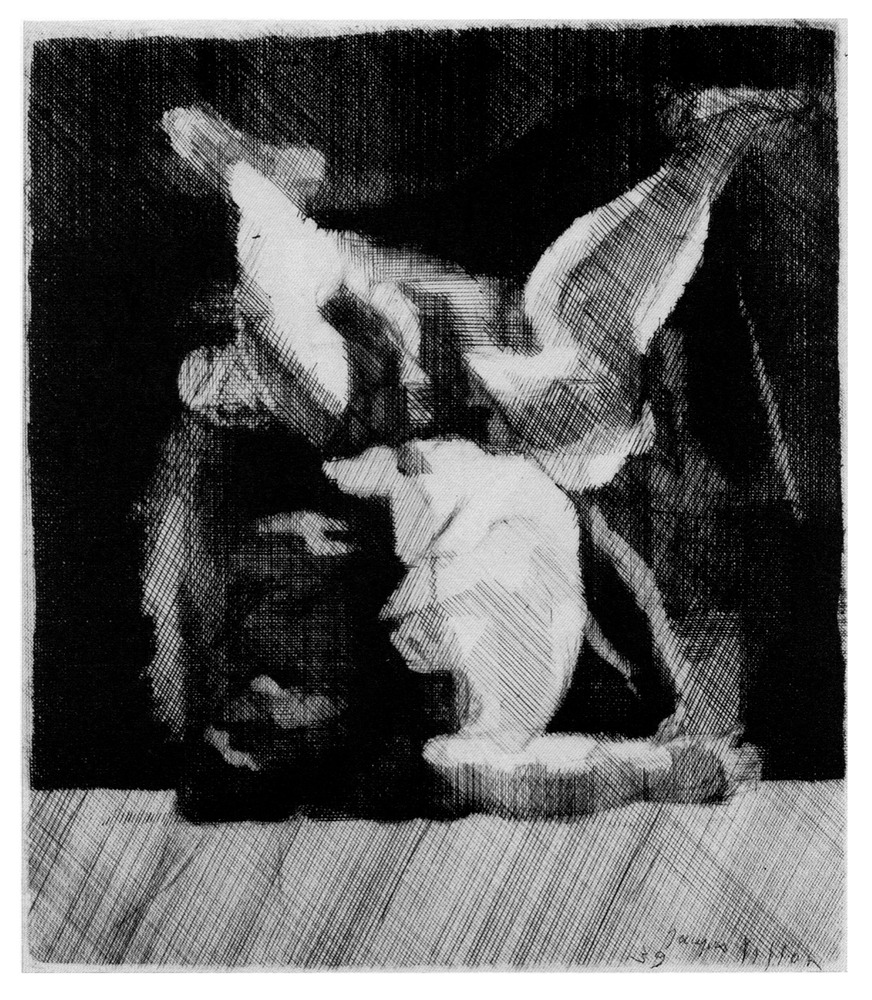JACQUES VILLON
Kupka lived in Puteaux, then a suburb of Paris, now the site of that great monument to the grandeur of François Mitterand, La Défense. His studio opened up to an area held in common with another painter, Jacques Villon. 'Jacques Villon' was the nom de plume of Gaston Duchamp, brother of the vastly more famous and vastly less interesting Marcel Duchamp. Kupka and Villon had moved into this studio space together in the early twentieth century at a time when they were both working as caricaturists in the various satirical magazines which thrived in Paris at this time. They were joined by a third Duchamp brother, the sculptor Raymond Duchamp-Villon. The studios at Puteaux became known as a meeting place for artists in the Cubist period and the conversations held there may be reflected in the book by Gleizes and Jean Metzinger, Du "Cubisme". Kupka was to complain that his contribution had been neglected by the Cubists and certainly I have never seen any mention of him by Gleizes who, however, speaks highly of Villon.
The next three paintings I want to show are by Villon belonging more or less to the same period as the woodcuts we have just seen by Kupka.
This last painting is an abstraction from the movements of a racehorse, an interest in movement he shared with Kupka whose earliest non-representational researches included studies of the movement of a child's ball. Raymond Duchamp-Villon died in the typhus epidemic in 1918 and Villon invited Gleizes, who had been living in New York, to use his studio. That was where Gleizes worked out the first steps of his own historical and practical approach to painting - Painting and Its Laws.
A black and white version of this painting is included in Painting and Its Laws. One can see that like the examples I've just shown you from Villon it is based on the superposition of a number of differently shaped plane surfaces. Villon, writing in 1924, praised Painting and Its Laws but the difference of approach seems to me to be clear. Despite Villon's interest in the successive stages of an object in movement he is not as interested as Gleizes in the movement of the eye. The Gleizes octagon, unlike the examples I've shown from Villon, invites the eye to turn in an essentially circular movement. Given that Villon was very conscious of Gleizes's thinking, this seems to me to have been a deliberate choice on his part. He was choosing intensity against mobility. Villon is best known as an engraver, working in black and white. An engraving such as his Wrestlers is, despite the dynamic character of the subject, massively static:

and the same quality of intensity rather than mobility can be seen in another late engraving, a landscape with a church and castle (Villon's commitment to non-figuration was quite shortlived but his work throughout his career was always plastically much more interesting than that of many, indeed most 'abstract' painters):
We may be reminded of the black and white intensity we saw earlier in the drawings of Georges Seurat: